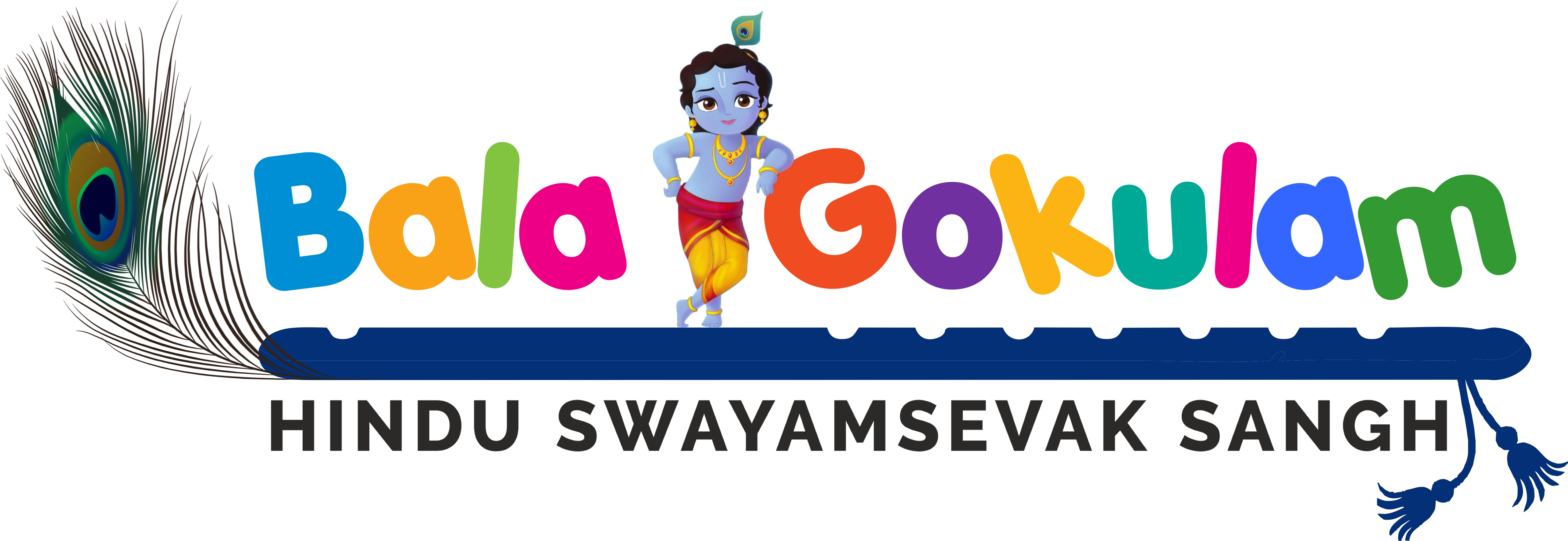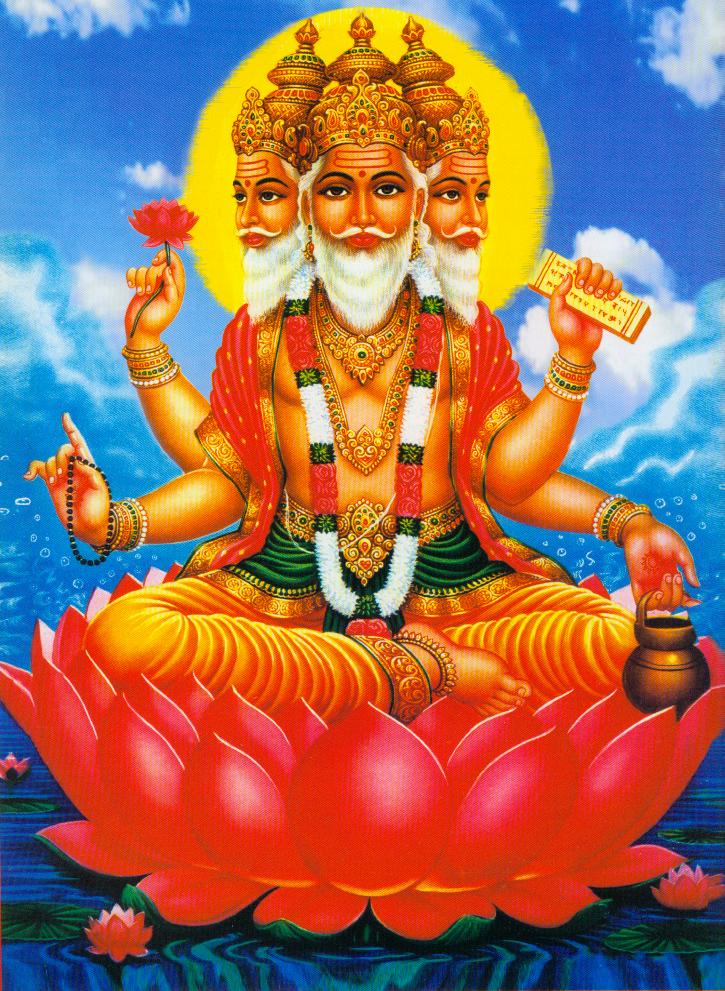Concept of Gods and Goddesses
Elementary School – Groups K-2 and 3-5
Contents: Main Reading
Additional Reading
Take Away and Questions
————————————————————
Section 1 – Main Reading
CONCEPT OF GOD IN HINDU DHARMA
Before we learn about various forms of Gods and Goddesses we pray to, let us understand the concept of God. As per our scriptures, there is only ONE GOD (supreme reality or divinity) which is formless (Niraakaar) and without attributes (no specific features) (Nirgun). Let us call this Brahman. Brahman means residing everywhere. It is the source of all that exists and is present in all that exists in the world. It is the essence of all that can be experienced but not seen.
The Supreme Divinity is also Antaryami which means residing within. It refers to the God residing within hearts of all beings. As Antaryami, God serves as an inner witness to the things that one does.
God (Bhagawan) is not far away, living in a remote heaven, but is inside every soul and everywhere. It is easier to worship, meditate and connect to the God when one sees the God in a specific form. That is why it is obvious to see Hindus worshipping the God in a specific form of their choice. Let us learn something from Amar and his sister Deevana.












Although the Brahman is formless and without attributes, it can manifest in different forms. Three major and very prominent manifestations are – Brahma, Vishnu and Mahesh (Shiva). Each one of the three forms represent one major part of the Brahman. There is a Creator (someone who creates), the Preserver (someone who maintains) and a Dissolver (someone who takes things apart so they can be created again). Let us explore them in detail.
Brahma (The Creator)
Brahma is known as Creator. He is also called as “svayambhu” because in reality no one created him – he created himself. His function is to create the universe (the world) and all beings. Brahma is usually shown red in color with four heads, bearded faces, and four arms. His four faces symbolically represent, the four directions, the four Vedas. In his hands Brahma holds four sacrificial tools – a kamandalu (pot), a rosary (mala – a sacred string of beads), a ladle, and the Vedas. He is usually portrayed sitting on a lotus or riding a white swan, which is known for its judgment between good and evil. Unlike other gods, Brahma is never shown holding weapons.
Vishnu (The Preserver)
Vishnu is the preserver and upholder of Hindu Dharma. He helps to save the world from evil and uphold righteousness. The color of Vishnu is dark blue, denoting his universe dimensions and his connection with the Vedic gods of rain and thunder and his relationship with the earth. Vishnu has four arms – one holds a shankha (conch shell) a sign of the divine sound “Aum,” the second holds a chakra (discus) to represent the wheel of time, the third holds Padma (a lotus) as an example of glorious existence, and the last holds a gada (mace) to indicate the power and punishing capacity of the Bhagawan if righteousness (dharma) in life is ignored. He lies on Seshanag (a powerful, coiled serpent) who represents the sleeping universe.
The vehicle of Vishnu is Garuda (eagle), the king of birds. Garuda is an assurance of fearlessness at the time of calamity. When dharma values are under threat, Vishnu emerges out of his transcendence to restore peace and order on earth. Vishnu has ten incarnations, the most popular are Rama and Krishna.
Shiva (The Dissolver)
Shiva is also known as ‘Mahadeva’ (the great God), is the god of Dissolver. He dissolves or removes negative presence such as ignorance and evil, in order for the transformation to take place for better. He is represented as linga, a symbol of regeneration. Shiva has blue throat because of poison which he drank and dissolved to save the world from destruction. He has three eyes. His third eye is believed to be eye of wisdom and when opened destroys evil and myriad illusion. In one hand he holds his weapon trident (Trishul), represents three qualities knowledge, desire and implementation. In another hand he holds damaru symbolizing the connection with primal sounds AUM. He wears snake around his neck which represents his control over desire and sensuality. The crescent moon adorns his hair and Ganga (river Goddess) flows out of his topknot.
This grouping of Brahma, Vishnu and Shiva is called the Trimurti – the Hindu Trinity . Though Brahma, Vishnu and Shiva were separately described and have their own unique features, one must remember that in the end they are all one and the same. Thus, the Trimurti demonstrates that the Creator, Preserver and Dissolver ultimately work together as GOD. They symbolize different aspects of human personality including wisdom, knowledge and power.
. Though Brahma, Vishnu and Shiva were separately described and have their own unique features, one must remember that in the end they are all one and the same. Thus, the Trimurti demonstrates that the Creator, Preserver and Dissolver ultimately work together as GOD. They symbolize different aspects of human personality including wisdom, knowledge and power.
Section 2 – Additional Reading
Additional Reading #1 : God is Everywhere
Story of Prahlad (For Groups K-2 and 3-5)

There once lived a demon king called Hiranyakashyap. Through many years of meditation he had acquired a boon from Brahma that no man or beast, nor devil, nor god shall cause his death by day or by night with steel or stone or wood, indoors or outdoors, on earth or in the sky. He had a son names Prahlad, who was a great devotee of Sri Vishnu. He would chant Vishnu’s name all the time. This made Hiranyakashyap so angry. He asked him to stop worshiping Vishnu. But Prahlad continued in his devotion. Prahlad was thrown over a cliff, in boiling oil. But every time Vishnu saved him. One day Hiranyakashyap asked Prahlad, “You said God protects you. Can you show me your God?” Prahlad replied, “God is everywhere”. King was standing next to pillar, so the king asked “Is your God in pillar?” Prahlad said “Yes”. Hearing this Hiranyakashyap got very angry and shot the pillar with his mace. And to his surprise Sri Vishnu appeared there in form of Narasimha, half lion and half human. It was neither day nor night when he appeared. He lifted the king and placed him on his thighs. He sat on the threshold of the palace and killed him neither by metal, nor wood, but with his claws.
Additional Reading #2
More on Gods and Goddesses
Let us learn about some of the more prominent forms of Goddesses such as Lakshmi, the Goddess of Wealth; Saraswati, the Goddess of Knowledge; and Parvati, the Goddess of Strength; Ganesh, the remover of Obstacles; and Hanuman, the Embodiment of Strength and Perfect Devotion.
Devi Saraswati (Goddess of Knowledge) (For Groups K-2 and 3-5)
Saraswati is the Goddess of knowledge, music, art, wisdom and learning. The white cloths (sari) she adorns reflects purity. The scriptures she holds are vedas and represents truth or pure knowledge, while japa mala (beads) represents discipline, concentration and  meditation. The musical instrument she plays is called veena, represents arts, and symbolizes the knowledge to tune one’s heart and mind in harmony with others and the world. She often pictured seated on white lotus, which symbolizes purity and knowledge. Her mount, the hamsa (swan) is believed to have the ability to separate milk from water with his beak and symbolizes the ability to discriminate between good and evil. Peacock besides her represents beauty, dance and her ability to deal with desire and ignorance.
meditation. The musical instrument she plays is called veena, represents arts, and symbolizes the knowledge to tune one’s heart and mind in harmony with others and the world. She often pictured seated on white lotus, which symbolizes purity and knowledge. Her mount, the hamsa (swan) is believed to have the ability to separate milk from water with his beak and symbolizes the ability to discriminate between good and evil. Peacock besides her represents beauty, dance and her ability to deal with desire and ignorance.
Devi Lakshmi (Goddess of Wealth & Wellbeing) (For Groups K-2 and 3-5)
Lakshmi is goddess of wealth and prosperity. She is depicted with four hands. From the lowest hand golden coins fall, representing wealth and luxury that she dispenses to all who worship her without greed.
Many merchants and tradesman pray to Lakshmi on a daily basis, wishing for a prosperous day of sales. For Lakshmi does represent beauty, purity and fertility, as well as, power of wealth.
She is the wife of Sri Vishnu.
Devi Parvati (Goddess of Strength and Power) (For Groups K-2 and 3-5)
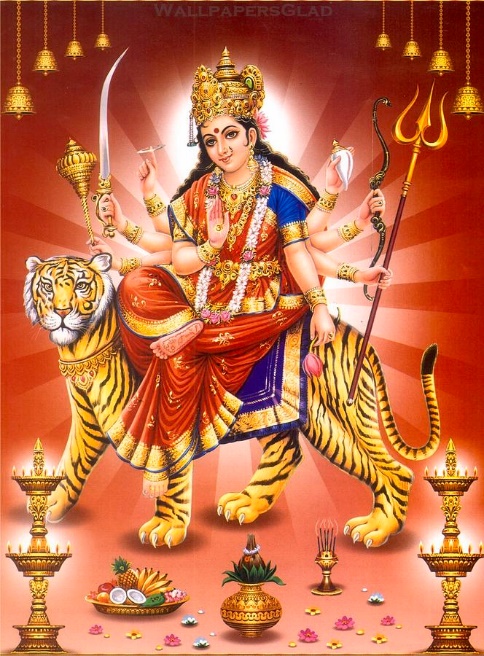 Many a times, a Goddess herself can manifest in to different forms to serve different purposes and so people know one goddess by various names. This is true for the Goddess Parvati, who can also be Durga or Kali. She can be both friendly, as Parvati, and powerful, as Kali and Durga.
Many a times, a Goddess herself can manifest in to different forms to serve different purposes and so people know one goddess by various names. This is true for the Goddess Parvati, who can also be Durga or Kali. She can be both friendly, as Parvati, and powerful, as Kali and Durga.
As Durga and Kali, the goddess becomes ever powerful, residing on a lion with eight arms. These arms stand for health, education, wealth, organization, unity, fame, courage and truth. She holds a weapon in each hand for the destruction of evil and the protection of good, represented by the lotus.
Parvati is wife of Shiva.
Ganesha (Remover of Obstacles) (For Groups K-2 and 3-5)
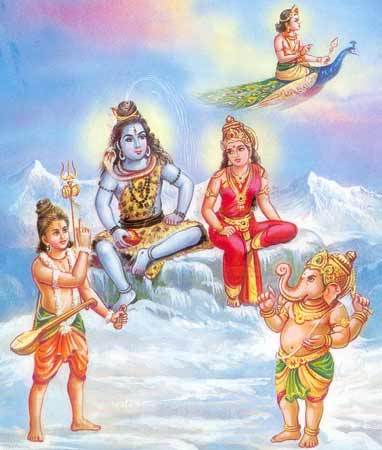 Ganesha is worshiped as God of Wisdom and remover of obstacles. As the God of beginnings, he is always worshiped or meditated upon in the beginning of any puja, ceremonies and any task you start. Ganesha mantras are chanted as a way to bring protection, luck and power to all those involved, and remove any potential ‘obstacles’ that may lie ahead. Ganesha is the son of Shiva and Parvati. He uses a mouse (Mūṣaka), as his mount (vahana). Modaka is a favorite treat of Ganesha. He is also known as Ganapati, Vinayaka or by many other names.
Ganesha is worshiped as God of Wisdom and remover of obstacles. As the God of beginnings, he is always worshiped or meditated upon in the beginning of any puja, ceremonies and any task you start. Ganesha mantras are chanted as a way to bring protection, luck and power to all those involved, and remove any potential ‘obstacles’ that may lie ahead. Ganesha is the son of Shiva and Parvati. He uses a mouse (Mūṣaka), as his mount (vahana). Modaka is a favorite treat of Ganesha. He is also known as Ganapati, Vinayaka or by many other names.
Story about Ganesha’s Wisdom
One day Ganesha and Karthikeya (Ganesha’s elder brother) found a unique fruit which is known to grant immortality and extensive knowledge. Being kids they were not ready to share the fruit. So, Shiva proposed a challenge. He asked his sons to take three rounds of the world and come back. Whoever would return first would get the fruit. Kartikeya flew away on his peacock. But Ganesha was worried as he had stout appearance and only had the little mouse as his vehicle. So he took decision based on his wisdom and circled around his parents three times. When asked by Shiva, Ganesha replied that his whole world lies at his parents’ feet and they are more than the world for him. Shiva was touched and impressed by Ganesha’s wisdom and saw him rightful owner of the fruit.

 Hanuman (For Groups K-2 and 3-5)
Hanuman (For Groups K-2 and 3-5)
Hanuman is devotee of Sri Rama. Hanuman is a figure of strength, courage, knowledge, bravery, simplicity, perseverance and devotion. He is also considered as son of Vayu (Wind). Hanuman was the chosen messenger and warrior of Sri Rama. Hanuman met Rama during his exile and always continued to serve Sri Rama with all devotion. He played a major role in killing Ravana by helping Sri Rama to save his wife Sita. He also was so brave to go and bring a mountain that had a herb called ‘Sanjeevani’ to save Sri Rama’s brother, Lakshmana’s life in a battle.
Avatars (Incarnations) of Sri Vishnu (For Group 3-5)
Sri Vishnu incarnated in human form on the earth to restore dharma and to punish the evil. Below are 10 avatars (incarnations) of Vishnu:
![]()
1. Matsya Avatar (The Fish): Matysa is Vishnu’s first avatar in physical being of this world. In “satya yuga” he is born as fish and rescue first man during the great flood that covered the world. We can relate this to the first creatures on the Earth that were developed in the ocean and cycle of life thus began. It also symbolizes fish like agility one must possess to build the foundation for any development.
2. Kurma Avatar (The Tortoise): During satya yuga, devas and demons were churning the ocean in order to reach the nectar of ![]() immortality (“Amruta”) hidden away at the bottom. Devas and demons were using mountains as staff to churn the ocean. When mountain started to sink, Vishnu appeared as tortoise to bear the weight of the mountain. In this process of churning, there were many important jewels that emerged including Moon, “Dhanvantari” (God of Ayurveda – ancient science of healing based on herbs and discipline), “Panchjanya” (conch of Vishnu), wealth. Along with all these virtues, “Visha” (poison) also came out. Shiva drank this to save others from the poison. Kurma avatar symbolizes the importance of solid foundation that is based on values to grow as an individual and society. This further explains hard-working nature one should develop and work continuously to make an impact in the society. Many obstacles may arise, like the poison, but we should get through them and the ultimate boons will certainly out-weigh any of those.
immortality (“Amruta”) hidden away at the bottom. Devas and demons were using mountains as staff to churn the ocean. When mountain started to sink, Vishnu appeared as tortoise to bear the weight of the mountain. In this process of churning, there were many important jewels that emerged including Moon, “Dhanvantari” (God of Ayurveda – ancient science of healing based on herbs and discipline), “Panchjanya” (conch of Vishnu), wealth. Along with all these virtues, “Visha” (poison) also came out. Shiva drank this to save others from the poison. Kurma avatar symbolizes the importance of solid foundation that is based on values to grow as an individual and society. This further explains hard-working nature one should develop and work continuously to make an impact in the society. Many obstacles may arise, like the poison, but we should get through them and the ultimate boons will certainly out-weigh any of those.
3. Varah Avatar (The Boar): A powerful demon Hiranyaksha, who stole the Earth to the bottom of the cosmic ocean, Vishnu appe
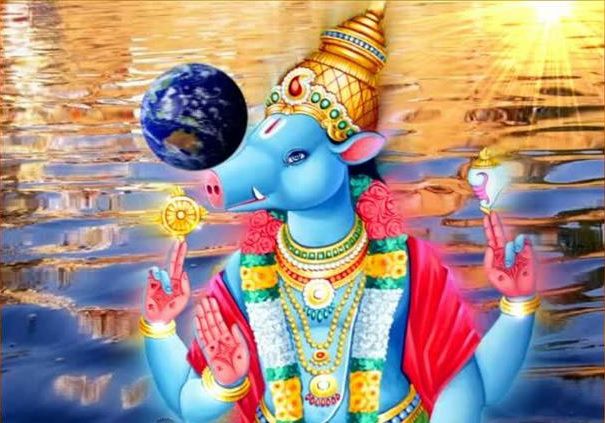
ared as Varah and fought with the demon. After winning the battle he carried Earth between his mighty tusks and restored the Earth to its place.
4. Narasimha Avatar: Vishnu appeared as Narasimha, half man and half human, during satya yuga. He killed the demon king
Hiranyakashyap as mentioned in the story of Prahlad above.
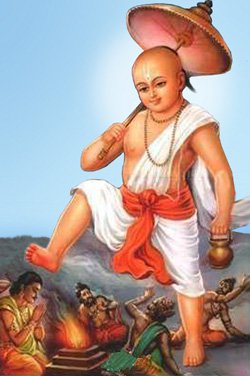 5. Vamana Avatar (The Dwarf): This is Vishnu’s first incarnation during “treta yuga”, also this is the first of Vishnu’s avatar to be fully human. Vishnu killed the King Mahabali (Bali) and gained control over the Earth.
5. Vamana Avatar (The Dwarf): This is Vishnu’s first incarnation during “treta yuga”, also this is the first of Vishnu’s avatar to be fully human. Vishnu killed the King Mahabali (Bali) and gained control over the Earth.
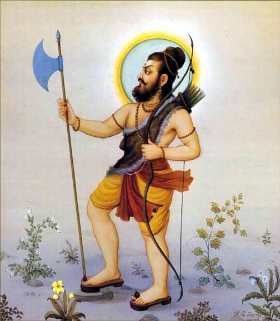
6. Parshurama: Parashurama is the first warrior-saint. He killed unrighteous kings. In this avatar Vishnu killed the King Kartavirya who had stolen the holy cow Kamadhenu from his father which would grant all desires. He also received the boon of immortality from Sri Vishnu.
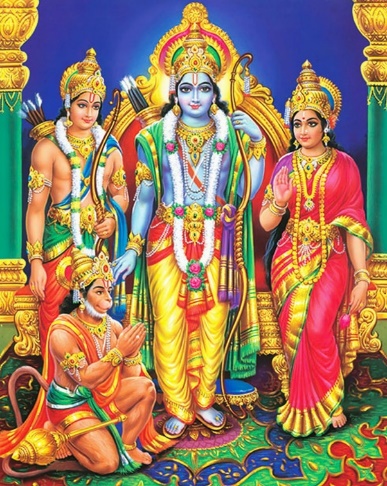 7. Rama: In this avatar Vishnu appeared as Rama in Treta yuga and killed Demon King of Lanka, Ravana and brought his wife Sita back. Rama is considered a Maryada Purushottama (The best of men who upholds of Dharma).
7. Rama: In this avatar Vishnu appeared as Rama in Treta yuga and killed Demon King of Lanka, Ravana and brought his wife Sita back. Rama is considered a Maryada Purushottama (The best of men who upholds of Dharma).
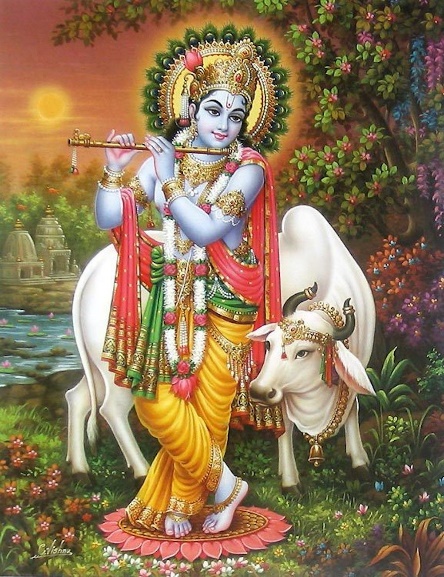
8. Krishna: Vishnu took this avatar in “dwapara yuga”. He slayed many demons including the notorious Kamsa. He played an important role in Mahabharata by standing alongside the Pandavas rescuing them throughout their lives. Krishna conveyed the message of Bhagawad Geeta – the scripture that describes different emotional states of mind and choosing the path of Dharma vs. A-Dharma.
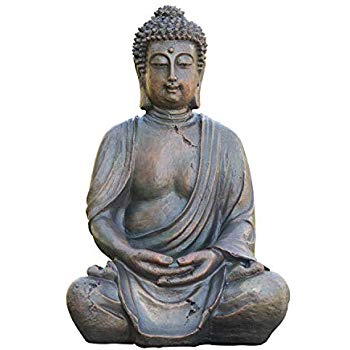
9. Buddha: Originally born as Indian Prince named Siddhartha, he became renowned as Gautam Buddha when he became a Monk. This avatar incorporated spiritual wellbeing of human being using the concept of dhyaan (Meditation) covered in Hindu scriptures and depicted the path of Nirvana.
 10. Kalki: This is the final incarnation of Lord Vishnu who will appear at the end of kali yuga. He will appear on Earth as a human being and sits on a white horse as Kalki. When there is chaos and evil, and dharma has vanished, he will end kali yuga to restart satya yuga (Another cycle of existence).
10. Kalki: This is the final incarnation of Lord Vishnu who will appear at the end of kali yuga. He will appear on Earth as a human being and sits on a white horse as Kalki. When there is chaos and evil, and dharma has vanished, he will end kali yuga to restart satya yuga (Another cycle of existence).
Section 3 – Take Away and Questions
Take Away from this week:
Hindus believe in one Supreme Divinity, Brahman, who is formless and everywhere.
- But that Supreme Being has many forms so we can relate to them.
- Each God or Goddess represent one aspect and there is something to learn from them
- Brahma, Vishnu and Shiva make the Trimurti who create, preserve and dissolve.
- Amongst the Goddesses, Devi Saraswati stands for knowledge, Lakshmi for wealth and Parvati for strength.
- Ganesha is remover of obstacles and Hanuman is worshipped for strength and courage
- There are many more including the 10 avatars of Vishnu
Explore:
- THINK: Who is your favorite God/Goddess and why? What do you learn from them?
- FAMILY CONNECTION: Many families have a family deity – God or Goddess – that they particularly worship and is special for the family or town you come from in India. Do you have one? Find out from your parents.
Questions:
For Groups K-2 and 3-5
- Match Gods with their significance by arrows
|
Name of God |
Significance |
|
|
Ganesha |
The Preserver |
|
|
Vishnu |
Goddess of Wealth |
|
|
Saraswati |
The Creator |
|
|
Shiva |
Goddess of Knowledge |
|
|
Brahma |
The Destroyer |
|
|
Lakshmi |
Remover of Obstacles |
Identify God by description and write number in last column
| Description | Name and Number | Answer |
| One who has snake around neck |
|
|
| One who has Garuda as his vehicle |
|
|
| He is a devotee of Rama |
|
|
| He likes Modakas | (1) Hanuman (2) Ganesha (3) Shiva (4) Vishnu | |
| She plays veena | (1) Saraswati (2) Lakshmi (3) Vishnu (4) Rama |
For Group 3-5
- Name any three Gods?
- Name any three Goddesses?
- Arrange the Avatars (incarnations) of Vishnu in order
| Avatar | Order # |
| Rama | |
| Varah Avatar (The Boar) | |
| Matsya Avatar (The Fish) | |
| Krishna | |
| Vaman (The Dwarf) | |
| Kalki | |
| Narasimha (The lion Man) | |
| Kurma or Koorma (The Tortoise) | |
| Parshurama | |
| Buddha |
4.Identify God by description and write number in last column
| Description | Name and Number | Answer |
| Creator of four Vedas |
|
|
| One who is represented by Linga |
|
|
| He carries Sudarshna chakra |
|
|
| He killed Hiranyakashyap | (1) Vaman (2) Ram (3) Narsimha (4) Krishna | |
| One with blue throat | (1) Brahma (2) Lakshmi (3) Vishnu (4) Shiva |
- Match avatars (incarnations) of Vishnu by description by arrow
| Description | Order # | Avatar |
| Killed Ravana | Krishna | |
| Appear at the end of Kali Yuga | Parshurama | |
| Saved first man from great flood | Kurma or Koorma | |
| Helped pandavas during Mahabharata | Ram | |
| Saved Earth from daemon and carried between his tusks to restored | Matsya | |
| First incarnation to be fully Human | Narsimha | |
| Killed daemon who stole the holy cow | Vaman | |
| Appeared as tortoise to bear weight of mountain during churning of ocean | Kalki | |
| Was half lion and half man and killed Hiranyakshyap | Buddha | |
| Born as price and became monk | Varaha |
- Determine if the following statements are True or False by marking in the correct column
| # | Statements | True | False |
| 1 | Vishnu holds his weapon Trishul (trident) in his hands | ||
| 2 | Saraswati holds vedas in her hand | ||
| 3 | Shiva has third eye known as eye of wisdom | ||
| 4 | Lord Brahma has 5 faces | ||
| 5 | Hanuman is devotee of Shiva | ||
| 6 | Brahma holds Veena in his hands | ||
| 7 | Parshurama is 1st incarnation of Vishnu | ||
| 8 | Ganesha has one Tusk | ||
| 9 | Ganesha circled around earth three times to complete the challenge. | ||
| 10 | Golden coins following from Lakshmi’s hand represents rain |
- Determine meaning of symbolism of Ganesh are True or False by marking in the correct column
| # | Statements | True | False |
| 1 | Large ear of Ganesha means ‘Listen Less’ | ||
| 2 | Small mouth of Ganesha means ‘Talk Less’ | ||
| 3 | Small eyes of Ganesha means ‘Concentrate’ | ||
| 4 | Large head of Ganesha means ‘Think Big’ | ||
| 5 | Modakas in Ganesha’s hand means ‘Eat More’ |
Bonus Questions
- What is meaning of Brahman?
- What is meaning of Antaryami?
- What is meaning of Bhagavan?
- What is each day of Brahma called?
- What does the dark blue color of Vishnu represent?
- Why did Vishnu take ten avatars?
- What does Vishnu hold in his four hands?
- Why does Shiva has blue throat?
- Why does Shiva destroys?
- What is the name of the river flowing out of Shiva’s topknot?
- Which god Hindu’s invoke before the start of any undertaking?
- What is the name of Ganesha’s Mushaka (Mouse)?
- Who are parents of Ganesha?
- What does Ganesha hold in his four hands?
- Give two names of Ganesha?
- What does Ganesha’s small eye symbolize?
- What does Ganesha’s big ears symbolize?
- What does Ganesha’s Big Head symbolize?
- What does Ganesha’s one Tusk symbolize?
- What does Ganesha’s big stomach symbolize?
- What does Ganesha’s small mouth symbolize?
- What does Saraswati hold in her four hands?
- What does Veena in Saraswati’s hand represent?
- What does Saraswati’s white cloth represent?
- What does Saraswati’s Hamsa (Swan) represent?
- What does peacock near Saraswati represent?
- What does Mala in Saraswati’s hand represent?
- What does Saraswati’s four hands represent?
